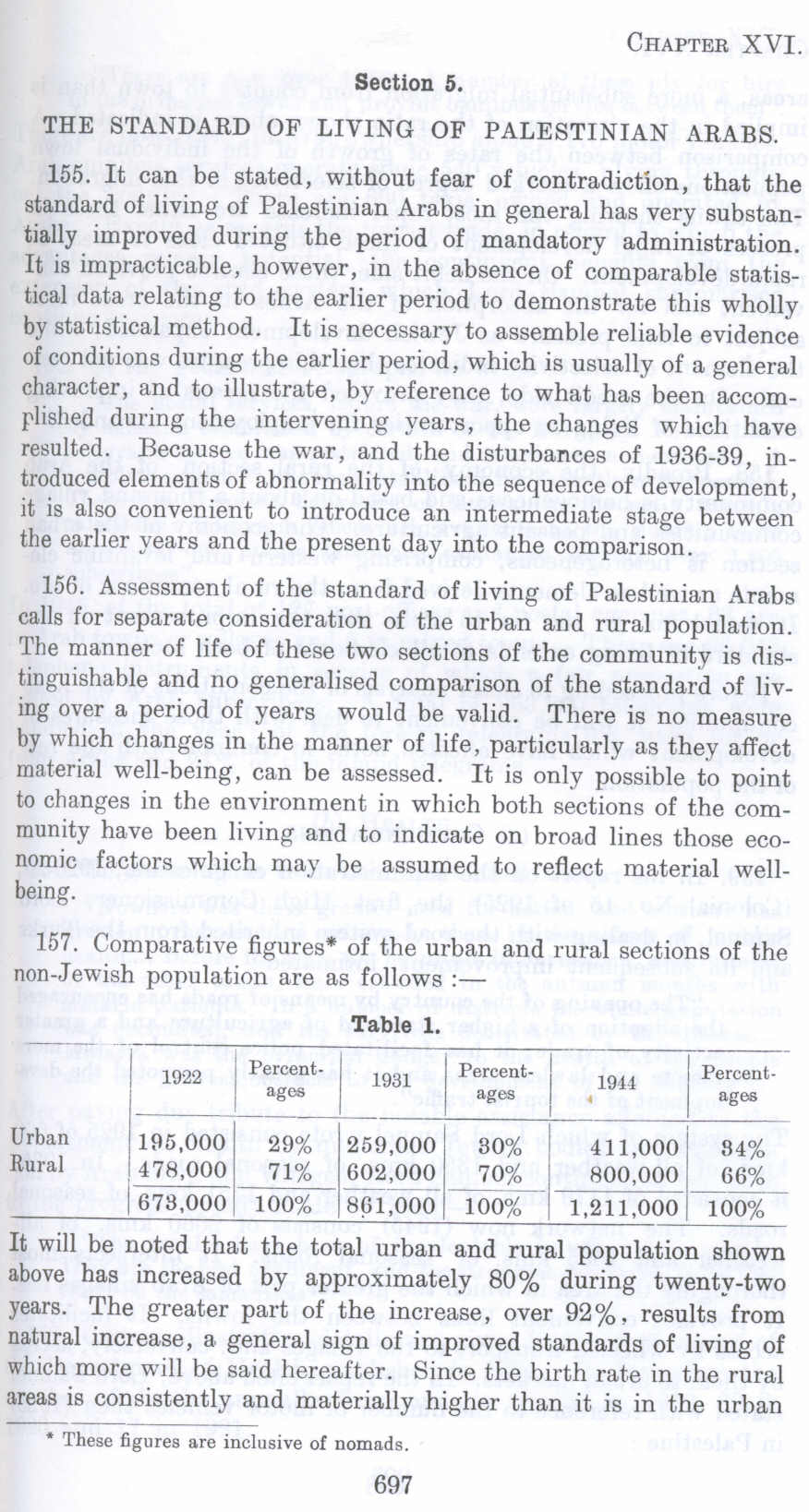| Prev | Next |  |
| Prev | Next |
| PalestineRemembered | About Us | Oral History | العربية | |
| Pictures | Zionist FAQs | Haavara | Maps | |
| Search |
| Camps |
| Districts |
| Acre |
| Baysan |
| Beersheba |
| Bethlehem |
| Gaza |
| Haifa |
| Hebron |
| Jaffa |
| Jericho |
| Jerusalem |
| Jinin |
| Nablus |
| Nazareth |
| Ramallah |
| al-Ramla |
| Safad |
| Tiberias |
| Tulkarm |
| Donate |
| Contact |
| Profile |
| Videos |
The Standard of Living of Palestinian Arabs, Table 1 showing Comparative Figures of The Urban and rural Sections of the Non-Jewish population in Palestine before 1948 (Nakba), British Mandate: A Survey of Palestine: Volume II - Page 697. Chapter XVI: Social Services : Section 5: |
Disclaimer
The above documents, article, interviews, movies, podcasts, or stories reflects solely the research and opinions of its authors. PalestineRemembered.com makes its best effort to validate its contents.


Post Your Comment
*It should be NOTED that your email address won't be shared, and all communications between members will be routed via the website's mail server.
Section 5.
THE STANDARD OF LIVING OF PALESTINIAN ARABS.
155. It can be stated, without fear of contradiction, that the standard of living of Palestinian Arabs in general has very substantially improved during the period of mandatory administration. It is impracticable, however, in the absence of comparable statistical data relating to the earlier period to demonstrate this wholly by statistical method. It is necessary to assemble reliable evidence of conditions during the earlier period, which is usually of a general character, and to illustrate, by reference to what has been accomplished during the intervening years, the changes which have resulted. Because the war, and the disturbances of 1936-39, introduced elements of abnormality into the sequence of development, it is also convenient to introduce an intermediate stage between the earlier years and the present day into the comparison.
156. Assessment of the standard of living of Palestinian Arabs calls for separate consideration of the urban and rural population. The manner of life of these two sections of the community is distinguishable and no generalised comparison of the standard of living over a period of years would be valid. There is no measure by which changes in the manner of life, particularly as they affect material well-being, can be assessed. It is only possible to point to changes in the environment in which both sections of the community have been living and to indicate on broad lines those economic factors which may be assumed to reflect material well being.
157. Comparative figures* of the urban and rural sections of the non-Jewish population are as follows :-
Table 1.
Urban Rural
195.000 I 29% I 259.000 I 30% I . 4 78,000 71 % 602,000 70%
I s1s.ooo ~ sG1,ooo 100%
1911 I Percent-
ages
411.000 I 84% 800,000 66%
1,211,000 100%
It will be noted that the total urban and rural population shown above has increased by approximately 80% during twenty-two years. The greater part of the increase, over 92%, results from natural increase, a general sign of improved standards of living of which more will be said hereafter. Since the birth rate in the rural areas is consistently and materially higher than it is in the urban
______________
* These figures are inclusive of nomads.
697